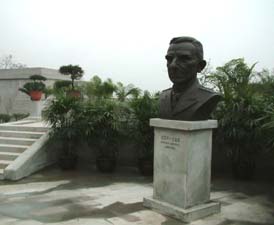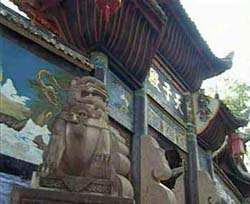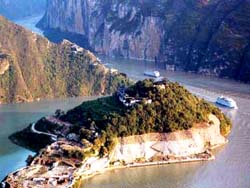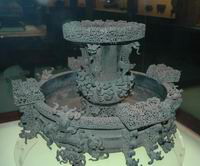| Day 1 Chongqing ( ) |
| Upon arrival at Chongqing airport, picked up by our local English speaking tour guide and drive to the hotel. Leisure on your own for the rest of the day. Recommend you to walk around the Ciqikou ancient town. |
Ciqikou Ancient Town | Ciqikou Old Town was once the home of many of Chongqing's rich merchants, where you can still see lots of Ming and Qing dynasty architecture, local shops, tea houses, local Sichuan street performance and so on.. |
|
 |
| [ Optional ] Stiwell Museum: General Joseph Warren Stiwell was chief commander of US forces in the China-Burma-India Theatre during World War II. His contribution to the Burma Road campaign was significant, the local government maintains a museum honoring him. |
|
| Day 2 Chongqing ( B,L,D ) |
| After morning breakfast in the hotel, transferred to Chongqing pier to board the Victoria Prince for your Yangtze River Cruise. It departs Chongqing at 10:00am, later take a shore excursion to Fengdu, the "Ghost City", known for its gardens, temples and statues of ghosts and devils. |
|
 |
| [ Optional ] Fengdu Ghost City: Fengdu is where the devil lives, according to Chinese legend. They say that spirits go to heaven, and evil goes to Fengdu. The town is overlooked by Ming Shan Hill, home of Tianzi, the King of the Dead. The whole place has an eerie feel to it with deserted streets, tower blocks, empty shops and banks. The only people here are those who make a living from visiting cruise boats. |
|
| Day 3 Yangtze Cruise ( B,L,D ) |
| Enter the Three Gorges, one of nature's most extraordinary sculptures. The 25-milelong Wu Gorge is known for its quiet beauty and forest-covered mountains. Take an excursion through the Daning River Small gorges, very impressive. (Depending on river conditions, an alternate excursion may be substituted to Shennong Stream, which has its own attractive gorges.) In the evening, sail through the Three Gorges Dam ship locks. |
Shennong Stream | Shennong Stream is another tributary of the Yangtze River, and its fast-flowing, crystal clear water runs southwards through deep gorges. The stream races past large and small karst caves, flocks of swallows, sheer cliffs, deep gorges, waterfalls, three-colored springs, rapids, the ancient plank pat…… | Lesser Three Gorges | The Lesser Three Gorges are the three separate valleys of the Daning River: Dragon Gate Gorge, Misty Gorge and Emerald Gorge. These lie on the lower reaches of the Daning, which flows into the Yangtze. The gorges are truly spectacular. Sheer cliffs soar up towards the sky from the brown-green water.…… |
|
 |
| [ Optional ] Shennong Stream: Shennong Stream is another tributary of the Yangtze River, and its fast-flowing, crystal clear water runs southwards through deep gorges. The stream races past large and small karst caves, flocks of swallows, sheer cliffs, deep gorges, waterfalls, three-colored springs, rapids, the ancient plank path, a suspended coffin in the cliff, groups of ancient tombs and marvelous karst formations. |
|
| Day 4 Yichang ( B,L,D ) |
| Shore excursion to The Three Gorges Dam Site (08h00-10h00). Sailing through the shiplocks and the shiplift of the Three Gorges Dam. |
The Three Gorges Dam | Three Gorges Dam, the largest water conservancy project ever undertaken by man and it has been a dream for several generations of Chinese people. It is 2,335 meters long, 185 meters high, 18 meters wide on the top and 130 meters wide at the bottom. |
|
 |
| [ Optional ] Yellow Mountain: Sunrise on Huangshan Mountain is amazing, there are more spectacular mornings and in particular when there is fog, the view is magnificent, many granite peaks and rocks emerging out of clouds. It is undoubtedly China's most celebrated mountain for all its grandeur and beauty. |
|
| Day 5 Wuhan ( B,L,D ) |
| Afternoon excursion of Wuhan, capital of Hubei Province. Visit the Huber Provincial Museum. |
Hubei Provincial Museum | The Hubei Provincial Museum established in 1953 contains the most important collections of artifacts in the province. More than 140,000 items, mainly from a big tomb excavated in 1978, are well preserved here, including 645 first class cultural relics and 16 national treasures. |
|
 |
| [ Optional ] Hubei Provincial Museum: The Hubei Provincial Museum established in 1953 contains the most important collections of artifacts in the province. More than 140,000 items, mainly from a big tomb excavated in 1978, are well preserved here, including 645 first class cultural relics and 16 national treasures. |
|